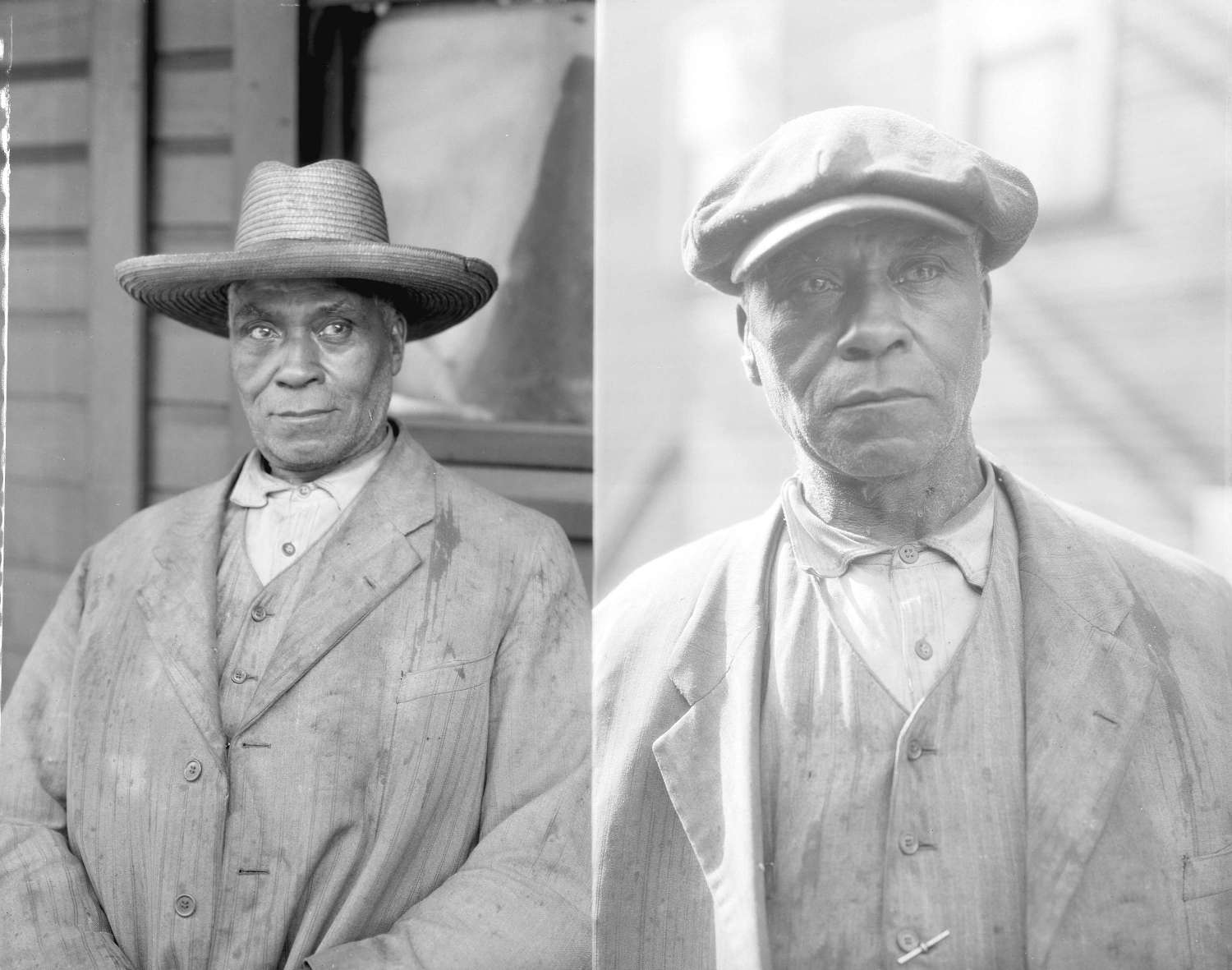Fielding William Spotts
Photograph


Image
Video
Audio
 Activities
Activities
LOOK
- Ask students what they see in the photo.
- Ask students what questions they have about the person in the photo.
DO
Activity: Students will undertake research about Fielding William Spotts Jr., his family, and his life in British Columbia.
DO
Activity: Students will research other Hogan’s Alley/Black Strathcona residents and explore their contributions to the community.
Activity: Students will research the Hogan’s Alley Society and their current plans to reclaim Hogan’s Alley/Black Strathcona in engagement with the City of Vancouver.
Details
 Materials
Materials - Photograph
Historical Context
Choose one of the three levels below to match your needs.
- This image shows Fielding William Spotts Jr. standing in front of his house in Hogan’s Alley/Black Strathcona, in Vancouver’s Strathcona neighbourhood.
- Spotts Jr.’s home and others would be demolished in the 1960s as part of the City of Vancouver’s urban renewal plans, which included building a bridge that connected downtown Vancouver with Strathcona.
This photo from 1935 shows Fielding William Spotts Jr., who lived and owned a business in the Hogan’s Alley/Black Strathcona community in Vancouver’s Strathcona neighbourhood. In the photo, Spotts Jr. is standing in front of his home on Prior Street.
Spotts Jr.’s home and others would be demolished in the 1960s as part of the City of Vancouver’s urban renewal plans, which included building the Georgia Viaduct, a bridge that connected downtown Vancouver with Strathcona.
This image shows Fielding William Spotts Jr. in 1935 at the age of 78. Spotts Jr. was a cooper by trade and owned a business in Hogan’s Alley/Black Strathcona, in Vancouver’s working-class Strathcona neighbourhood.
In this photo, Spotts Jr. is standing outside of his Hogan’s Alley/Black Strathcona home at 217 ½ Prior Street. Spotts Jr.’s home and others would be demolished in the 1960s as part of the City of Vancouver’s urban renewal plans, which included building the Georgia Viaduct, a bridge that connected downtown Vancouver with Strathcona.
Images like this photo of Fielding William Spotts Jr., a long-standing resident of Hogan’s Alley, can help us to humanize a person or community from the past and put a face to a name that we might read in history books.
- This image shows Fielding William Spotts Jr. standing in front of his house in Hogan’s Alley/Black Strathcona, in Vancouver’s Strathcona neighbourhood.
- Spotts Jr.’s home and others would be demolished in the 1960s as part of the City of Vancouver’s urban renewal plans, which included building a bridge that connected downtown Vancouver with Strathcona.
This photo from 1935 shows Fielding William Spotts Jr., who lived and owned a business in the Hogan’s Alley/Black Strathcona community in Vancouver’s Strathcona neighbourhood. In the photo, Spotts Jr. is standing in front of his home on Prior Street.
Spotts Jr.’s home and others would be demolished in the 1960s as part of the City of Vancouver’s urban renewal plans, which included building the Georgia Viaduct, a bridge that connected downtown Vancouver with Strathcona.
This image shows Fielding William Spotts Jr. in 1935 at the age of 78. Spotts Jr. was a cooper by trade and owned a business in Hogan’s Alley/Black Strathcona, in Vancouver’s working-class Strathcona neighbourhood.
In this photo, Spotts Jr. is standing outside of his Hogan’s Alley/Black Strathcona home at 217 ½ Prior Street. Spotts Jr.’s home and others would be demolished in the 1960s as part of the City of Vancouver’s urban renewal plans, which included building the Georgia Viaduct, a bridge that connected downtown Vancouver with Strathcona.
Images like this photo of Fielding William Spotts Jr., a long-standing resident of Hogan’s Alley, can help us to humanize a person or community from the past and put a face to a name that we might read in history books.
Summary
- This image shows Fielding William Spotts Jr. standing in front of his house in Hogan’s Alley/Black Strathcona, in Vancouver’s Strathcona neighbourhood.
- Spotts Jr.’s home and others would be demolished in the 1960s as part of the City of Vancouver’s urban renewal plans, which included building a bridge that connected downtown Vancouver with Strathcona.
Essential
This photo from 1935 shows Fielding William Spotts Jr., who lived and owned a business in the Hogan’s Alley/Black Strathcona community in Vancouver’s Strathcona neighbourhood. In the photo, Spotts Jr. is standing in front of his home on Prior Street.
Spotts Jr.’s home and others would be demolished in the 1960s as part of the City of Vancouver’s urban renewal plans, which included building the Georgia Viaduct, a bridge that connected downtown Vancouver with Strathcona.
In-Depth
This image shows Fielding William Spotts Jr. in 1935 at the age of 78. Spotts Jr. was a cooper by trade and owned a business in Hogan’s Alley/Black Strathcona, in Vancouver’s working-class Strathcona neighbourhood.
In this photo, Spotts Jr. is standing outside of his Hogan’s Alley/Black Strathcona home at 217 ½ Prior Street. Spotts Jr.’s home and others would be demolished in the 1960s as part of the City of Vancouver’s urban renewal plans, which included building the Georgia Viaduct, a bridge that connected downtown Vancouver with Strathcona.
Images like this photo of Fielding William Spotts Jr., a long-standing resident of Hogan’s Alley, can help us to humanize a person or community from the past and put a face to a name that we might read in history books.
